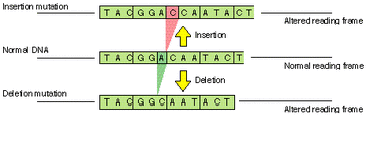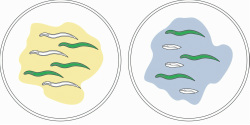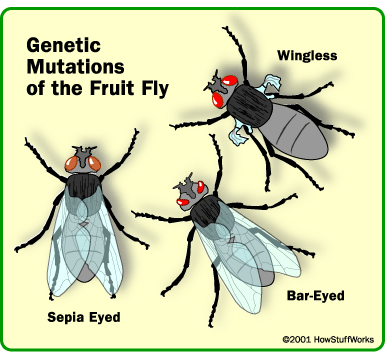An Overview
A genome is the complete set of genetic material in an organism. Meaning a mapped out sequence of all of its DNA , which in turn means a complete map of all an organism's genes. A mutation in the genome means a change in the sequence of DNA. There are several different types of mutations, including substitution, insertion, and deletion.
The genotype, or sequence of DNA, determines the phenotype, or physical attribution, of the organism. So a small mutation in the genome could potentially have a very large effect on the organism. It could also have no effect on the organism. Genotype transference to phenotype in not an exact science as of now, it is still unclear to current scientists which sequences of DNA correspond to which phenotypes, and some sequences of DNA are not even activated in the genome.
The large picture relates to evolution. A mutation in the genome can cause a change in the phenotype of the organism. If the change is positive, the organism may pass down the change to its offspring, and over a long period of time, the organism may change due to the mutations into a new organism.
The genotype, or sequence of DNA, determines the phenotype, or physical attribution, of the organism. So a small mutation in the genome could potentially have a very large effect on the organism. It could also have no effect on the organism. Genotype transference to phenotype in not an exact science as of now, it is still unclear to current scientists which sequences of DNA correspond to which phenotypes, and some sequences of DNA are not even activated in the genome.
The large picture relates to evolution. A mutation in the genome can cause a change in the phenotype of the organism. If the change is positive, the organism may pass down the change to its offspring, and over a long period of time, the organism may change due to the mutations into a new organism.
From DNA to Protein: A Quick Refresher
DNA to Amino Acid: An in depth version can be found on our transcription and translation pages. However, to put it simply, our genetic code is a string of nucleotides. Three nucleotides code for one amino acid
Amino Acid to Protein: A string of amino acids coded from the DNA will fold onto itself. The specific folding and string of amino acids is a protein, which in turn makes up basically every living thing.
Mutations in DNA
 Click on image for original link
Click on image for original link Substitution: A substitution in DNA mutation means that one amino acid is replaced with another. This mutation does not affect the nucleotides around it, and will only change one amino acid. However, the change in the amino acid could potentially cripple the protein that would result from it, as shown in the picture. But remember that the protein could also benefit from it, or not change at all.
 Click on image for original link
Click on image for original link Insertion and Deletion: An insertion in the DNA means a whole nucleotide is added somewhere in the sequence, while a deletion means a whole nucleotide is erased from the sequence. This affects all the nucleotides around the mutation, and changes the sequence of DNA on a large scale. Every amino acid is altered, and their is a very large chance the protein is altered as well.
Mutations in the Genome Change the Organism
 Click on image for original link
Click on image for original link Mutations can have either no effect, a small effect, or a large effect on an organism. Most have no effect and are called silent mutations (Fun fact, 98.5% of the human genome can be mutated without a noticeable effect). The mutations that do have an effect (and these are the changes that are usually called by insertion and deletion mutations; mutations that shift the entire frame of a sequence) can either cripple or benefit an organism. Take a look at the picture, in the first sample, the mutation (in this case, turning the organism white) causes a color change, which improves camouflage in water (assuming these are water organisms, it's a rather crude example). In the second sample, the mutation not only turns the organism white, but deletes its tail, seriously crippling its ability to swim. Hence, mutations can be beneficial or detrimental.
Mutations in the Organism Over Time Drives Evolution
Mutations in the genome that are beneficial to the organism, such as camouflage, will eventually be passed down to offspring. Over time, as more mutations develop, the organism that was previously the same, such as the green and white organism, may eventually become two separate organisms, as the white ones can now safely live in water illuminate by light due to their white color, while the green ones will more than likely stay in areas that are dark. As well, mutations with detrimental effects will not survive and will not be able to reproduce, eliminating their altered genome from the gene pool. For example, in fruit flies, sepia eyed flies have a larger range of view with normal wings, and will probably survive longer than the bar-eyed and wingless flies, thus eliminating them and preventing them from reproducing. As the sepia eyed fruit flies reproduce, a beneficial mutation in the genome will let the new organism live longer than the sepia eyed flies, changing the organism permanently. Thus, mutations are one of the driving forces of evolution.

